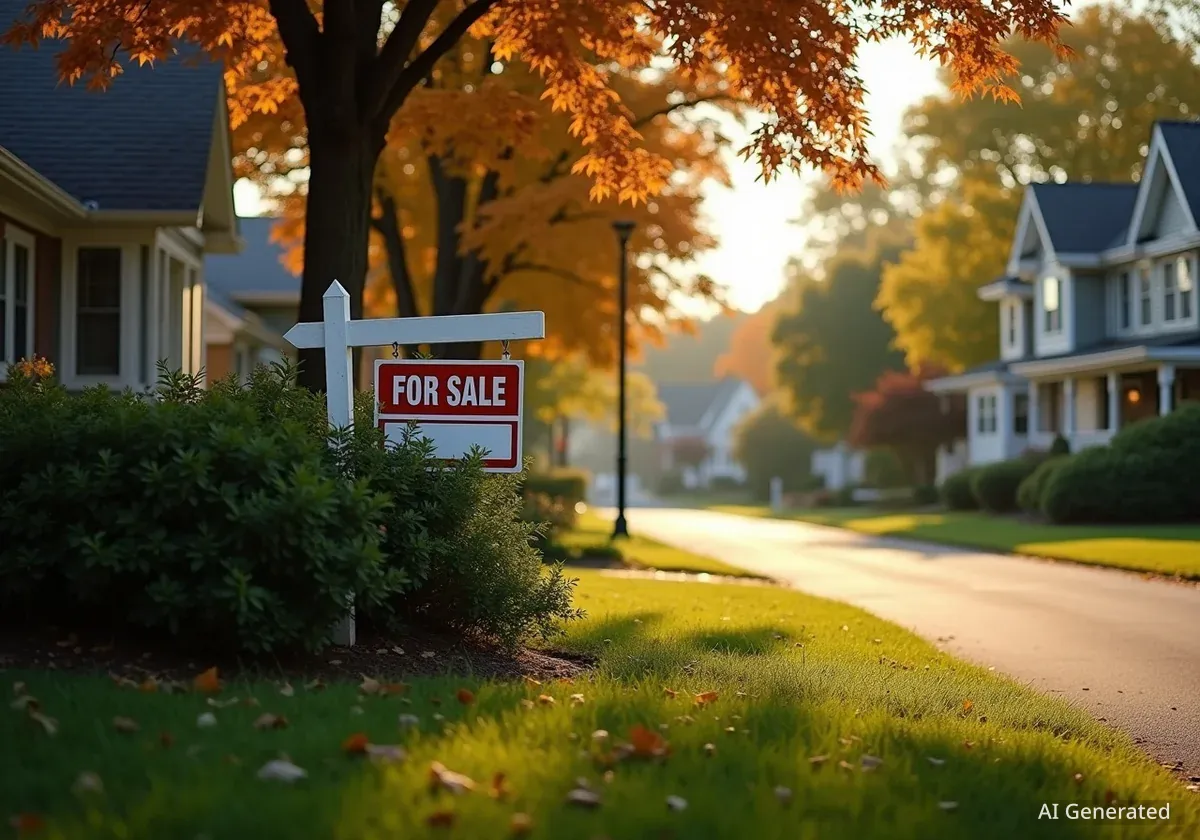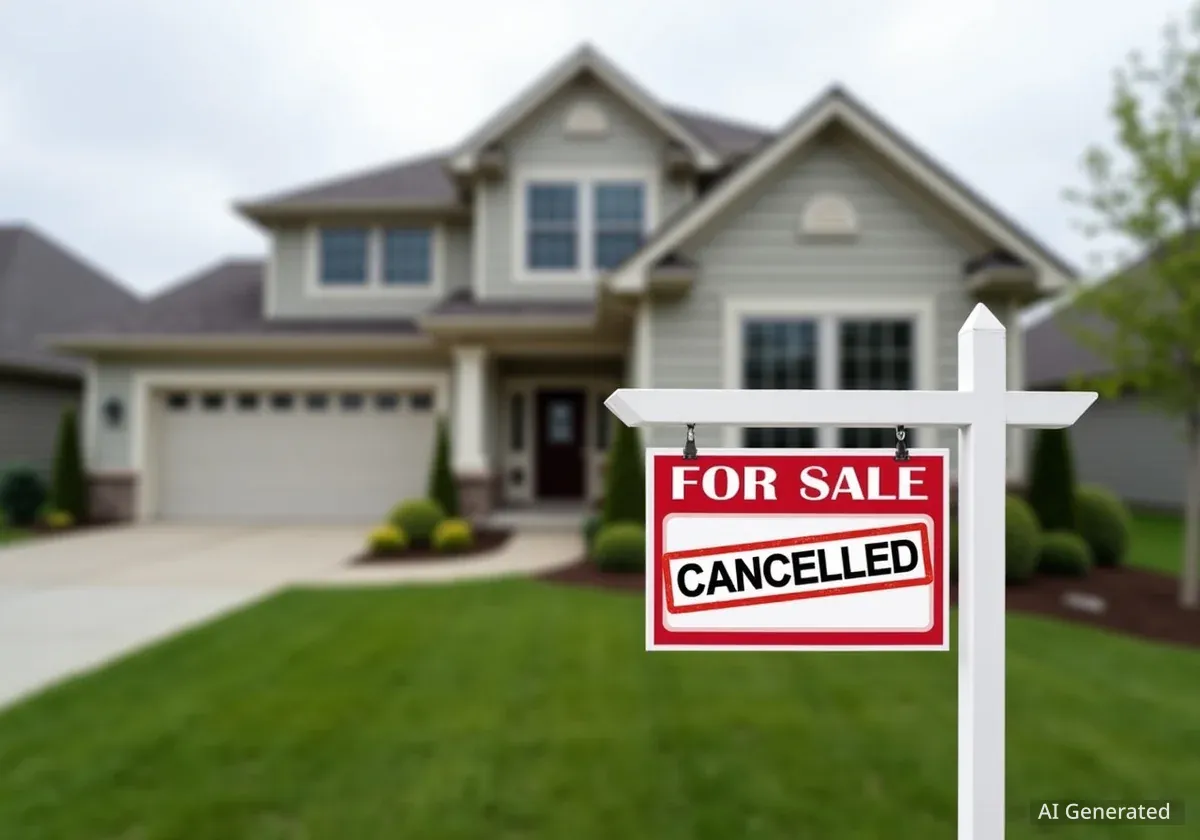Minnesota's housing market is facing a complex challenge that extends beyond high interest rates and limited supply. A growing demographic issue, where older homeowners remain in their large family homes, is significantly restricting housing availability and impacting affordability for a new generation of buyers across the state.
This trend, often referred to as "aging in place," means fewer starter and mid-sized homes are entering the market. Experts argue that without a strategic increase in diverse housing options, including multifamily units, the state's real estate market will remain gridlocked, affecting everyone from first-time homebuyers to renters.
Key Takeaways
- Minnesota's housing market is constrained by low inventory and high prices, driven by more than just economic factors.
- A key issue is the state's aging population remaining in larger single-family homes, a trend known as "aging in place."
- This demographic shift keeps smaller, more affordable homes off the market, creating a bottleneck for younger buyers.
- Experts suggest that building more diverse housing, especially multi-family units, is essential to create movement and improve overall market health.
The Anatomy of a Stagnant Market
For several years, potential homebuyers in Minnesota have encountered a difficult real estate landscape. A surge in demand that began in late 2020 drove prices to historic levels. While the initial frenzy has subsided, core problems like low housing inventory and elevated prices persist, creating significant barriers for those looking to move.
Monica Haynes, director of the Bureau of Business and Economic Research at the University of Minnesota Duluth, monitors these trends closely. She observes that the market has offered little relief for those trying to enter it.
“It doesn’t seem like there’s been any relief for first-time homebuyers or people who are looking,” stated Haynes, highlighting the ongoing struggles faced by many Minnesotans.
This situation is not unique to the Twin Cities. In Duluth, a region with its own specific housing challenges, the market reflects the broader state-wide issues. Average listing prices there have climbed above $400,000, while the number of available homes remains well below pre-pandemic levels.
An Unexpected Indicator: Home Size
An interesting statistic from the Duluth market reveals a deeper issue. According to Haynes, the average size of a home listed for sale has increased significantly. In 2021, the average listed home was approximately 1,550 square feet. By last year, that figure had risen to nearly 1,800 square feet.
Shifting Market Profile
The increase in the average size of homes for sale is not because new, larger houses are being built. Instead, it indicates that owners of larger, more expensive properties are the primary sellers, while smaller, more affordable family homes are not being listed.
This trend suggests a market divide. Wealthier individuals, who can better absorb higher mortgage rates, are buying and selling larger properties, including second homes and investment rentals. Meanwhile, the owners of more modest homes are staying put, effectively removing a crucial segment of the market from circulation.
The Demographic Gridlock
While high mortgage rates and a persistent lack of new construction are well-known contributors to the housing crunch, a less discussed factor is having a profound impact: Minnesota's aging demographics.
Many current homeowners secured mortgages years ago at interest rates below 4%. With current rates significantly higher, there is a strong financial disincentive to sell and move, an effect known as the mortgage rate "lock-in." This affects homeowners of all ages but is particularly pronounced among older generations who have lived in their homes for decades.
What is 'Aging in Place'?
"Aging in place" refers to the choice of older adults to continue living in their own homes for as long as possible, rather than downsizing or moving to senior living facilities. While beneficial for individual well-being, this trend can have significant effects on the housing market when it occurs on a large scale, as it delays the transfer of housing stock to younger generations.
Haynes points to this demographic reality as a primary cause of the market's stagnation, especially in regions like Northeast Minnesota.
“It’s something people don’t think about or want to talk about,” Haynes explained. “One of the main causes, especially in [the Northeast Minnesota] region, is that there are a lot of people aging in place.”
This phenomenon keeps family-sized homes, ideal for younger people looking to establish roots, off the market for extended periods. As baby boomers retire in large numbers, this demographic gridlock is no longer a rural issue but a statewide one, impacting even the fastest-growing metropolitan areas.
The Ripple Effect on Buyers and Renters
The lack of movement at the middle and upper ends of the housing market creates a domino effect. When established homeowners do not downsize or move, the supply of single-family homes available for first-time buyers dwindles. This scarcity drives up prices for the few homes that do become available, pushing homeownership further out of reach for many.
This pressure doesn't just affect buyers. A tight homebuying market forces more people to rent for longer, which in turn increases demand for rental properties and contributes to rising rents. The entire housing ecosystem is interconnected, and a bottleneck in one area creates strain across the board.
Many younger people today, even those with incomes comparable to their parents' generation, find it nearly impossible to achieve the same housing stability. The combination of high prices, high interest rates, and low inventory creates a formidable barrier to entry that did not exist 20 or 30 years ago.
Building a Way Forward
According to Haynes, the most effective solution observed in other parts of the country involves a significant increase in new housing supply. Markets that have seen prices stabilize or decline are typically those that have successfully added a large volume of new housing options.
While Minnesota has seen some public and private investment in new housing, the impact has been limited. A cultural and political focus on single-family homes often overshadows the need for other types of housing. In many communities, proposals for apartment buildings or other multifamily units are met with skepticism.
However, experts argue that this type of development is crucial for a healthy market. Building more multifamily housing creates what Haynes calls "churn."
“When we have that, we have more churn,” she said. “More people are moving into the type of housing they need, opening up single family homes and more affordable smaller homes. It benefits everyone, even when we are building primarily large multifamily units. When they’re built, they fill.”
New, desirable apartments can attract empty nesters looking to downsize from their large homes. This, in turn, frees up those single-family houses for younger families, creating a positive chain reaction throughout the market. The solution is not about replacing single-family homes but about creating a balanced ecosystem of housing choices that meets the needs of residents at every stage of life.





